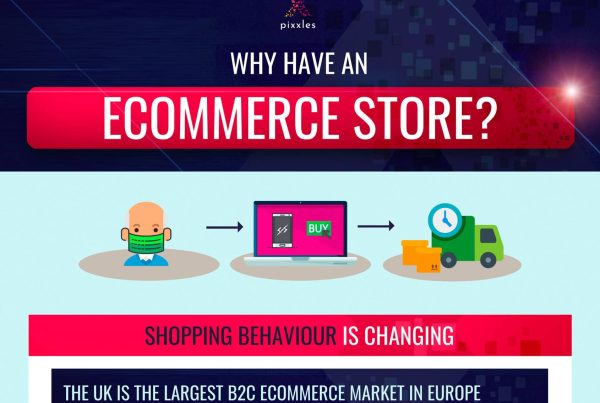Embedded Finance Quick Definition
Embedded finance is when financial services are integrated into non-financial businesses. This allows companies to offer services like payments, lending, or insurance within their platforms without needing to involve traditional financial institutions.
What Is Embedded Finance?
As mentioned, embedded finance is when a non-financial company offers a financial service or a financial product of some kind.
A ride-sharing app, for example, might provide car insurance options within the app itself, or an ecommerce platform might extend financing to its sellers within the platform.
Within ecommerce, Klarna is a good example of an embedded finance platform, as it provides ‘buy now, pay later’ services. Klarna assumes the risk, pays the retailer upfront, and then allows the customer to repay in installments directly within the platform.
While Klarna is an obvious example, embedded finance also comes in less obvious forms.
Consider Uber. While most people view Uber as a ride-sharing app, it has substantial embedded finance features. When riders use the app, they can pay for their trips directly through a stored card, digital wallet, or Uber Cash (Uber Cash is a digital currency within the app).
Moreover, Uber drivers can receive payments, track their earnings in real time, and even cash out their earnings any day of the week. All of these transactions occur within the Uber platform, making it a great example of embedded finance in action.
How Does Embedded Finance Work?
Embedded finance works through technologies like APIs, which act like bridges, enabling different software systems to communicate with each other seamlessly and share functionalities.
This means that APIs allow non-financial businesses to actually incorporate the services that financial institutions and fintech companies offer.
Let’s take an ecommerce platform as an example. This platform might want to offer its customers the ability to pay in installments via a ‘buy now, pay later’ service. But to do so, they’ll need APIs that can integrate a fintech company’s installment payment service directly into the checkout process.
What Types of Embedded Finance Are There?
There are several different types of embedded finance. Let’s look at the most common ones.
Embedded Payments
Embedded payments are a type of embedded finance that eliminates the need for users to navigate to a separate platform or service to complete a transaction.
Venmo is a great example of embedded payments, as it allows users to quickly and easily send money to friends, split bills, etc., within the app.
Embedded Banking
An example of embedded banking would be a retail company allowing customers to pre-load funds into its app to spend later, effectively acting like a digital wallet.
Embedded banking is made possible through partnerships between traditional banks (or fintech companies) and non-financial businesses, again with the help of APIs to integrate the services.
Embedded Insurance
Embedded insurance is another crucial aspect of the embedded finance ecosystem, and it can show up in a myriad of sectors.
Let’s say, for instance, that you’re booking a trip on a travel website, and you’re offered travel insurance at the point of checkout. You’ve just encountered embedded insurance, which has been integrated into your purchasing journey, making it easy for you to opt in.
Embedded Lending
The goal of embedded lending is to make access to credit as convenient and frictionless as possible. This, of course, sets the stage for innovative financial solutions.
One of our favorite examples is “Buy now, pay later” (BNPL), a specific form of embedded lending that has become quite popular.
In addition to Klarna, platforms like Afterpay and Affirm provide these services within online stores, offering an instant and often interest-free loan at the point of sale.
Beyond BNPL, embedded lending can range from offering personal loans to mortgages.
» MORE: Streamline transactions with easy online payment solutions
The Benefits of Embedded Finance
Embedded finance offers several benefits.
Increased Revenue Streams
For businesses, embedded finance can lead to new sources of revenue via transaction fees, interest on loans, premiums on insurance, and more.
Improved Customer Retention
Businesses can increase customer engagement and loyalty by offering a wide range of services. When customers can access multiple services in one place, they’re less likely to switch to a different platform.
Data Insights
Embedded finance can provide valuable data on customer behavior, which businesses can use to improve their services, create personalized offers, and make data-driven decisions.
Financial Inclusion
Embedded finance can help bring financial services to underserved populations, contributing to greater financial inclusion.
Operational Efficiency
For businesses, embedded finance can streamline operations, reduce the need for manual interventions, and improve the efficiency of the business model.
Competitive Advantage
In a crowded market, offering embedded financial services can help businesses gain a competitive edge.
» MORE: Benefits of Pixxles, an FCA-authorized payment provider
Why Embedded Finance Is So Popular
Embedded finance is popular for a few different reasons. It increases access to financial services. It creates new business opportunities. But most importantly, embedded finance improves customer experiences.
If a person needs a loan to make a big-ticket purchase on an ecommerce site, embedded lending options can provide the funds at the point of sale. If a customer wishes to insure a ride-share trip, integrated insurance options offer coverage at the click of a button.
As you can see, it all boils down to convenience.
What Is the Future of Embedded Finance?
In the past, it was local banks that primarily offered financial services to small and medium-sized businesses.
But nowadays, embedded finance has significantly broadened the scope and accessibility of such services. Small and medium-sized businesses can now access a range of financial services that would have been inconceivable 30 to 40 years ago.
Where does this lead?
According to Sven Doerfel, writing for FinTech, “The embedded finance sector is expected to be worth US$7.2tn globally by 2030 with revenues reaching US$121bn by 2029 in the UK and Europe, a 187% increase from 2022.”
With the embedded finance sector projected to grow exponentially in the coming years, it’s clear that this trend will introduce seismic shifts in the fintech landscape.
Firstly, new types of competition will emerge. As embedded finance allows non-financial companies to offer financial services, traditional financial institutions will have to compete with technology companies, retailers, and other businesses.
Hopefully, this increased competition will drive innovation and lead to the creation of more customer-centric products and services.
We can also expect to see an increase in strategic partnerships. To offer embedded finance services, many businesses will choose to partner with established financial institutions or fintech companies. Rather than compete with each other, these companies will be able to leverage each other’s strengths.
Additionally, the rise of embedded finance will likely lead to a greater focus on user experience.
As financial services become more integrated into other platforms, businesses, to stay competitive, will need to ensure these services are easy to use and seamlessly fit into the overall customer journey.
This will almost certainly lead to more intuitive interfaces, simpler processes, and more personalized services.
Finally, the growth of embedded finance could have a significant impact on financial inclusion. Embedded finance has the potential to reach underserved populations and help make financial services more accessible.
The Future and All-In-One Embedded Finance Platforms
Moving forward into the future, we’re likely to see all-in-one embedded finance platforms. This just means that a wide range of financial services will be integrated within a single “super” platform.
For better or worse, users will be able to manage their entire financial lives within these platforms, accessing a diverse range of services.
For businesses, offering such a comprehensive suite of services would provide them with a wealth of data to better understand their customers’ needs and behaviors.
While there are certainly challenges to creating such all-in-one platforms, including significant concerns about data privacy, this is likely the direction we’ll see for embedded finance in the future.
What Are The Challenges of Embedded Finance?
Despite its many benefits, embedded finance does face some significant challenges.
Regulatory Compliance
While regulators are tasked with protecting customers, the ambiguous nature of embedded finance, which blurs traditional boundaries, presents a challenge.
Embedded finance sometimes operates in grey regulatory areas, so constant work is needed for regulatory bodies to define and enforce appropriate regulations and keep customers safe.
Data Security and Privacy
With financial services come a lot of sensitive financial data, and protecting this data is critical. Businesses must ensure robust data security measures to prevent breaches, and they must also comply with data privacy laws. This is a complex and costly process.
Technical Implementation
Integrating financial services into a platform can be technically challenging, requiring sophisticated software and systems and world-class expertise.
User Experience
Creating a smooth and intuitive user experience is difficult, as it requires the following:
(1) Understanding the needs and behaviors of your users, (2) knowledge of how to design a system that meets user needs, and (3) the ability to design underlying systems that function reliably and efficiently. (4) It also involves ongoing testing and refinement to continually improve the user experience and keep up with evolving user expectations.
Naturally, all of this is costly and takes time.
Risk Management
Offering financial services, such as lending or insurance, involves taking on financial risk. Businesses must have strategies in place to manage and mitigate these risks.
Partnership Management
For many businesses, offering embedded financial services means partnering with other companies, such as banks or fintech companies. Managing these partnerships can be challenging.
What Is The Difference Between Embedded Fintech and Embedded Finance?
The terms embedded fintech and embedded finance are often used interchangeably, and they both refer to integrating financial services into non-financial platforms.
However, embedded fintech specifically emphasizes the role of financial technology, while embedded finance is a broader term.
When someone refers to embedded fintech, they might be talking about when a fintech company partners with a non-financial business to provide a technological solution, such as payment processing or a digital wallet.
It’s worth noting that these terms are still relatively new and evolving, and different sources may use them in different ways.








